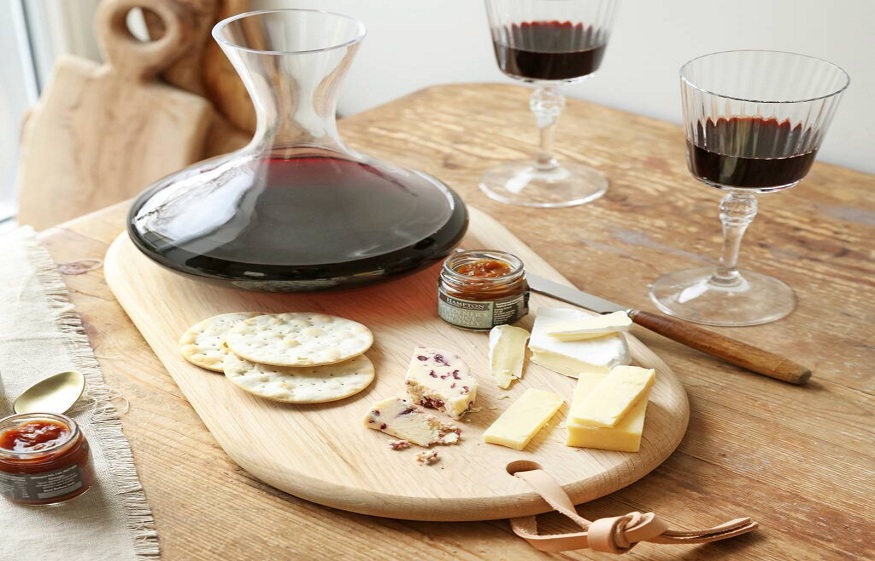
Over the years, having an engraved wine decanter on the table has helped people make serving wine a stylish ritual. Personalizing these timeless vessels turns them into keepsakes that are special to hand down or give. Picking the right engraved wine decanter depends on thinking about several elements that impact how it looks and how well it works.
-
Understanding the Importance of Material Quality
The materials used and how well a monogrammed decanter is crafted form the base of why a decanter excels. The choice of crystal or glass for decanter manufacturing has benefits and characteristics that improve both how well the decanter does its job and its overall durability. No other tool for serving wine is so treasured as a lead crystal decanter which is known for being crystal clear, very sparkly and heavy, making it seem truly luxurious. Items made with lead content ranging between 24% and 32% tend to have a softer composition which makes it easier to cut and engrave them in fine detail. Because metals can be shaped in many ways, artisans create delicate and fine engravings that beautifully display and focus light when engraved on your jewelry. Moreover, the high density of lead crystal makes it sound better and warmer than other types of glass, so a tap is gentle for high-quality results.
-
Selecting the Perfect Design and Shape
The silhouette of your wine decanter significantly influences both its visual impact and functional performance, making design selection a critical consideration in your purchasing decision. Traditional shapes have evolved over centuries, each offering specific advantages for different wine types and serving preferences. Classic ship’s decanters feature wide, stable bases with elegant curved necks, originally designed to remain upright during ocean voyages. These timeless designs provide excellent stability on modern dining tables while offering generous surface area for engraving placement. The broad base allows for maximum wine exposure to air, promoting optimal aeration for full-bodied red wines that benefit from extended breathing time.
-
Choosing the Right Engraving Style and Placement
When engraving your decanter, you turn something practical into something more personal which involves careful picks about both style and what it can do. pick a style that matches your decanter’s look and is also easy to read. Some of the usual traditional engraving processes are hand-etching, sandblasting and laser engraving, all giving the items unique appearances and similar levels of detail. Each hand-etched design is unique, as slight differences in the engraving and its character show skill of the craftsperson. Because sandblasting produces a subtle matte finish,
-
Considering Size and Capacity Requirements
The right size decanter is essential because it will help your decanter suit a variety of entertaining occasions. A normal wine bottle holds 750 milliliters, but decanters can be very small for a glass or much larger to fit several bottles. Many people use single-bottle decanters holding from 750ml to 1 liter since they have the right capacity and are not too heavy when full compared to others. These wine sizes allow wine to get enough air for its aroma to develop but are still easy to pour and handle by the server. Because the piece is not too big or large, there is still plenty of room for engraving that makes sense for the sculpture.
-
Evaluating Craftsmanship and Long-term Value
The quality of construction and attention to detail in manufacturing directly correlate with your decanter’s longevity, performance, and overall satisfaction with your purchase. Examining specific craftsmanship elements helps distinguish superior pieces from mass-produced alternatives that may disappoint over time. Seam quality represents a primary indicator of manufacturing standards, as high-quality decanters feature virtually invisible joining lines where different glass sections meet. Run your fingers along the decanter’s surface, feeling for rough spots, uneven thickness, or raised seam lines that indicate inferior construction. The neck attachment point particularly reveals craftsmanship quality, as this stress point must withstand repeated handling and potential thermal expansion during washing.
Conclusion
Selecting the perfect custom bag tags engraved wine decanter requires balancing multiple considerations to ensure your choice provides lasting satisfaction and functionality. The material quality forms the foundation of any exceptional decanter, with crystal options offering superior brilliance and engraving capabilities that showcase personalization beautifully. Design selection influences both aesthetic appeal and practical performance, with traditional and contemporary shapes each offering unique advantages for different preferences and wine types.
